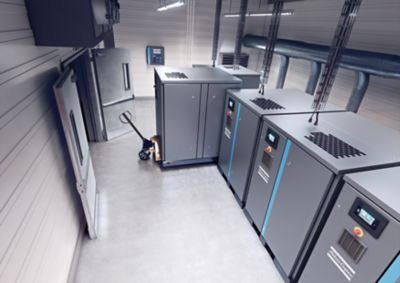Understanding the nature of future proof technologies
The green tech market may be young, but it has already caught the attention of many investors. More and more people are realizing how climate change and using up natural resources are harming the environment.
What is future proof technology?
A future proof technology system refers to using technology and science to develop products and services for climate change mitigation. Modern technologies focus on using products and services that improve business operations and save money.
It involves less energy consumption, producing less waste, and minimizing harm to the environment.
Future proof technology aims to limit the impact on the environment, restore damage done in the past, and preserve the earth's natural resources. Climate smart solutions have also become a burgeoning industry that has attracted huge amounts of investment capital.
Futureproof technologies examples
So-called green technology includes various practices and ideas that protect the environment and use resources sustainably. These practices aim to minimize harm to the planet. Climate change and carbon emissions are worldwide problems.
People are working hard to fix local environmental issues. Some seek to protect specific ecosystems or endangered species. Others seek to conserve scarce natural resources by finding more sustainable alternatives.
Renewable energy sources
Many companies are working on creating alternative clean energy sources that do not produce carbon emissions to replace fossil fuels. Solar and wind energy are now among the most economical energy sources.
Other alternatives, such as geothermal and tidal energy, have not yet gained widespread implementation.
Biogas
Biogas is hailed as a future proof technology due to its climate smart attributes. It is produced through anaerobic digestion, breaking down organic matter like food waste or animal manure.
Unlike fossil fuels, biogas is renewable, reduces methane emissions, and repurposes existing material, making it a perfect alternative to conventional natural gas.
Hydrogen
Green hydrogen, produced by splitting water using renewable electricity, holds immense promise.
Its applications span diverse sectors: fuel cells for clean transportation, energy storage to balance grids, and even as a zero-emission fuel for heavy industries.
Electric cars
The Environmental Protection Agency states that transportation activities release nearly a third of greenhouse gas emissions. Car manufacturers are aiming to reduce emissions by making engines more fuel-efficient or switching to electric power.
However, electric vehicles require a lot of work and innovation in other areas, such as high-capacity rechargeable batteries and charging infrastructure. Furthermore, the reliance on fossil fuels in many power grids still limits the benefits of electric vehicles.
Agriculture
Agriculture and livestock farming have a substantial environmental footprint. From the high costs of land and water use to the ecological consequences of pesticides, fertilizers and animal waste. As a result, there are many opportunities for future proof technology in the area of agriculture.
Organic farming helps keep soil healthy. Innovations in livestock feeding can lower methane emissions. Meat substitutes can reduce the demand for livestock.
Recycling
Recycling seeks to conserve scarce resources by reusing materials or finding sustainable substitutes. Many people recycle common items like plastic, glass, paper, and metal. However, more advanced recycling operations can also recover valuable raw materials from electronic waste or car parts.
rPlanet Earth: Recycling Done Right
In line with their sustainability principles, when it came to saving waste on their nitrogen supply, rPlanet Earth turned to Atlas Copco and together we worked on a project that achieved truly remarkable results, as demonstrated in this video.
Carbon capture and storage
Carbon capture is a set of new technologies. These technologies aim to remove and store greenhouse gases. The gases are taken out from the air or from their source.
The fossil fuel industry has heavily promoted building this technology, but it has yet to meet those expectations. The largest carbon capture facility can only remove 4,000 tons of carbon dioxide annually. This amount is significantly less than the total yearly emissions.
The adoption of new technologies
While future-proof technology is a broad and difficult category to define, some types have seen widespread adoption.
Several countries are actively working to eliminate single-use plastics. This will need a lot of money to invest in other options like paper, biodegradable plastics, or recycling methods. Singapore, for example, has committed to reaching 70% recycling by 2030.
Long-lasting technologies aim to preserve biodiversity and conserve the earth's resources. However, it can be challenging to achieve these goals without unintentionally impacting the environment in other ways. In some cases, reducing environmental costs in one area means causing adverse impacts in another. It requires careful accounting to ensure that the benefits outweigh the costs.
Our future proof products
In our range of solutions, you can find various future-proof technologies and products
- compressor room monitoring systems
- variable speed drive technology
- rotary drum dryers
- nitrogen gas generators
- energy recovery
- industrial water cooling systems
- leak repair
- energy audits
In our range of solutions, you can find various future-proof technologies and products
- compressor room monitoring systems
- variable speed drive technology
- rotary drum dryers
- nitrogen gas generators
- energy recovery
- industrial water cooling systems
- leak repair
- energy audits
In our range of solutions, you can find various future-proof technologies and products
- compressor room monitoring systems
- variable speed drive technology
- rotary drum dryers
- nitrogen gas generators
- energy recovery
- industrial water cooling systems
- leak repair
- energy audits
In our range of solutions, you can find various future-proof technologies and products
- compressor room monitoring systems
- variable speed drive technology
- rotary drum dryers
- nitrogen gas generators
- energy recovery
- industrial water cooling systems
- leak repair
- energy audits



